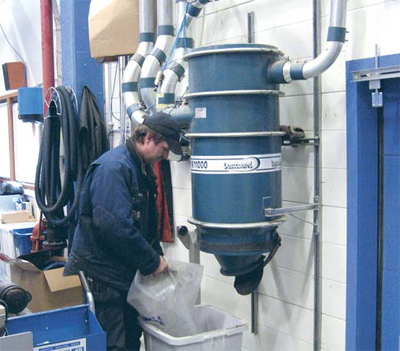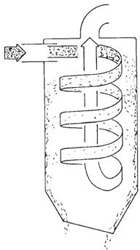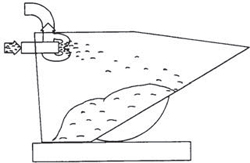Pre-Separators
|
When large quantities of material are to be separated, it is advisable to use a pre-separator. The pre-separator can be placed at the workplace or in conjunction with the central unit. Pre-separators should be used: – for material recovery When a pre-separator is to be used the following should be considered: 1. Type of dust to be handled.
|
|
Pre-separators
Pre-separators can be used in all applications where the extracted material is coarse or voluminous. These can be placed in the actual workplace for separate handling or recovery of the extracted material, or centrally.
Pre-separators separate material from the air-flow using the action of a cyclone or with inertial separation. Inertial separators are generally configured as containers with the inlet and outlet in the same wall of the container. When the air-flow changes direction abruptly, separation occurs for the particles with higher relative mass. When pre-separation is used to accommodate higher material volumes it is also important to consider the type of material discharge to be used. Dustcontrol offers a range of different standard options including; screw compaction, airlocks or container collection.
 United Kingdom
United Kingdom  Sverige
Sverige  Deutschland
Deutschland  Suomi
Suomi  Austria
Austria  United States
United States  .com
.com  France
France 



 910-395-1808
910-395-1808